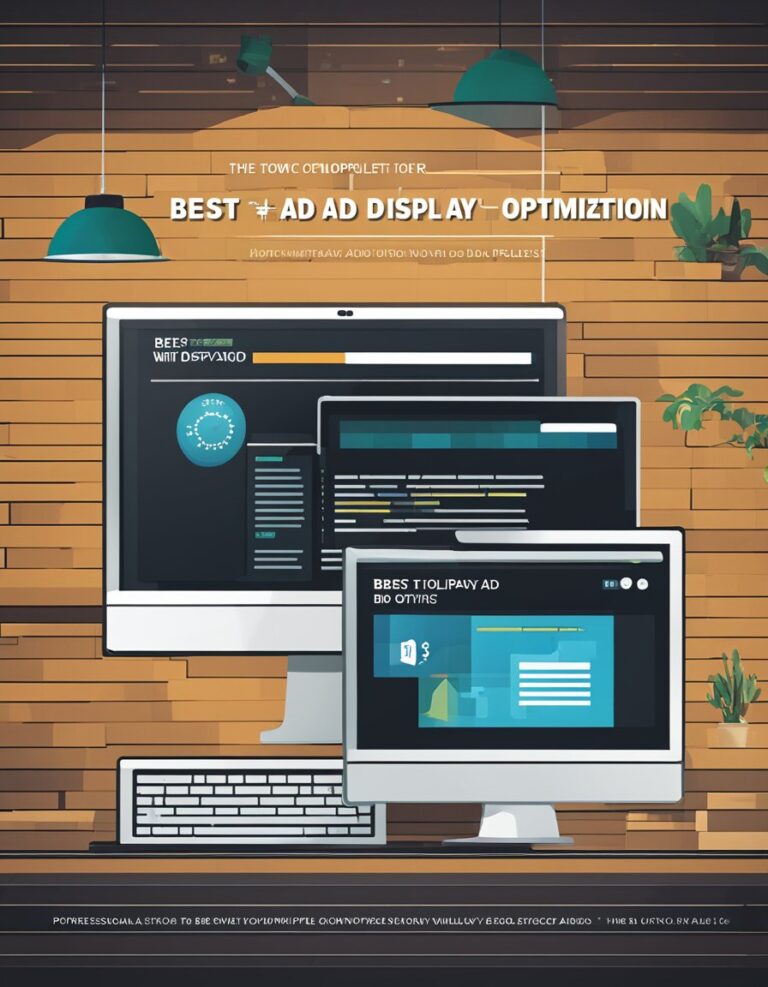They say ‘opportunity knocks,’ but when it comes to landing lucrative brand partnerships through sponsored content, it’s more about creating the perfect invitation.
In today’s competitive digital landscape, the ability to collaborate with brands and monetize your influence is a valuable skill. But how can you ensure that you stand out from the crowd and attract the right partnerships?
In this discussion, we will explore proven tips and strategies that can help you master the art of landing lucrative brand partnerships. From understanding the value of sponsored content to crafting compelling proposals and creating authentic content, this guide will provide you with the tools you need to unlock exciting opportunities and take your brand collaborations to the next level.
So, are you ready to unlock the door to your dream brand partnerships?
Understanding the Value of Sponsored Content
Understanding the value of sponsored content is crucial for successfully landing brand partnerships. As a content creator, you need to be able to demonstrate the effectiveness of your sponsored content to attract potential brand partners.
One way to measure the effectiveness of your sponsored content is by analyzing the engagement it generates. This can be done by tracking metrics such as likes, comments, shares, and click-through rates.
By providing brands with concrete data on the impact of your content, you can show them the value of partnering with you.
However, when measuring effectiveness, it’s important to consider ethical considerations. As a content creator, you have a responsibility to ensure that your sponsored content aligns with your values and the interests of your audience.
It’s crucial to disclose any partnerships or sponsored content transparently so that your audience is aware of any potential biases. This transparency not only builds trust with your audience but also demonstrates your commitment to ethical practices.
Building a Strong Personal Brand
To build a strong personal brand, you need to focus on authenticity, consistency, and credibility.
Authenticity means being true to yourself and your values, which will attract like-minded individuals and potential brand partnerships.
Consistency in your messaging and visuals across all platforms will help establish recognition and trust.
Lastly, engaging your target audience through meaningful content and interactions will create a loyal following and attract brands looking to collaborate with an influential and engaged community.

Authenticity in Branding
Creating a strong personal brand requires the genuine expression of your unique identity and values. Authenticity in branding is crucial for building trust with your audience and establishing a lasting connection.
Here are three key elements to consider when it comes to authenticity in branding:
- Building trust: Authenticity builds trust, which is essential for establishing credibility and reliability. By being true to yourself and transparent in your brand messaging, you can foster trust with your audience.
- Genuine storytelling: Sharing your personal stories and experiences sincerely and authentically helps to create an emotional connection with your audience. Genuine storytelling allows people to relate to you on a deeper level and fosters a sense of authenticity in your brand.
- Consistency: Consistently staying true to your values and maintaining a genuine voice across all platforms and interactions is vital for an authentic brand. It helps to build trust and credibility over time, ensuring that your audience sees your brand as authentic and reliable.
Consistency and Credibility
Consistently maintaining your authentic voice and values across all platforms is essential for building a strong personal brand and establishing credibility with your audience.
To build trust and loyalty, it’s crucial to deliver consistent content that aligns with your brand identity.
This means staying true to your core message, tone, and style across all your online channels, such as your blog, social media profiles, and videos.
By consistently providing valuable and engaging content that reflects your expertise and values, you’ll attract a loyal following who sees you as a credible source in your niche.
Your audience will appreciate your consistency in delivering high-quality content, and this will enhance your reputation and credibility as a trusted authority in your field. Remember, building credibility takes time and effort, but it’s worth it in the long run.
Engaging Target Audience
Engage your target audience by consistently delivering valuable and authentic content that resonates with their needs and interests. Connecting with your audience is crucial in building a strong personal brand.
To do so, follow these three strategies:
- Understand your audience: Take the time to research and understand who your target audience is. What are their demographics, interests, and pain points? By understanding their needs, you can create content that speaks directly to them.
- Create compelling content: Once you know your audience, focus on creating content that’s informative, entertaining, and valuable. Use storytelling techniques to captivate their attention and make an emotional connection. Remember, it’s not just about promoting products or services, but about providing genuine value.
- Engage with your audience: Foster a two-way conversation by actively responding to comments, messages, and feedback. Encourage engagement by asking questions, conducting polls, and hosting live sessions. By actively listening and responding to your audience, you can build trust and loyalty.
Identifying and Targeting the Right Brands
To effectively land brand partnerships, you must first focus on identifying and targeting the right brands for your business. This requires implementing effective targeting strategies to ensure that you’re reaching out to brands that align with your values, goals, and target audience.
One of the first steps in this process is conducting thorough market research to understand your audience’s preferences and interests. By understanding their needs and desires, you can identify brands that offer products or services that complement your own.
Additionally, you should actively seek out brand partnership opportunities by attending industry events, networking with other professionals, and utilizing social media platforms.
Keep an eye out for brands that are already engaging with your target audience, as they’re more likely to be interested in collaborating with you.
Another effective strategy is to reach out to brands that share similar values or have a similar target audience. This can create a more seamless partnership and increase the likelihood of success.

Crafting Compelling Sponsorship Proposals
Once you have identified and targeted the right brands for your business, it’s essential to craft compelling sponsorship proposals that effectively communicate the value and potential of a partnership.
This is where your skills as an influencer marketer come into play. Here are three key elements to consider when crafting your sponsorship proposals:
- Tell a story: Use storytelling techniques to create an emotional connection with your audience. Show how your partnership with the brand can enhance their lives or solve a problem they may have. By evoking emotion, you can make your proposal more compelling and memorable.
- Highlight your unique selling points: Showcase what sets you apart from other influencers in your niche. Whether it’s your engaging content, loyal followers, or impressive sponsorship metrics, emphasize why partnering with you would be a valuable opportunity for the brand.
- Demonstrate the potential ROI: Brands want to see a return on their investment. Provide data and insights from previous collaborations to prove the effectiveness of your influencer marketing strategies. Include key sponsorship metrics such as engagement rates, reach, and conversion rates to demonstrate the potential impact of a partnership.
Crafting compelling sponsorship proposals is crucial for attracting lucrative brand partnerships. By incorporating storytelling, showcasing your unique selling points, and providing evidence of potential ROI, you can effectively communicate the value and potential of a partnership to brands.
Negotiating Win-Win Partnerships
When it comes to negotiating win-win partnerships, there are a few key points to keep in mind.
First, focus on creating collaborative brand partnerships that benefit both parties involved. This means seeking out mutually beneficial agreements that align with your goals and values.
To achieve success in negotiations, employ effective strategies that prioritize open communication, compromise, and finding common ground.
Collaborative Brand Partnerships
Finding collaborative brand partnerships that benefit both parties is essential for successful negotiations. These strategic partnerships and influencer collaborations can provide tremendous opportunities for growth and exposure. Here are three key benefits of collaborative brand partnerships:
- Increased brand visibility: By partnering with another brand or influential individual, you can tap into their existing audience and gain exposure to a wider demographic. This can help increase brand awareness and attract new customers.
- Access to new markets: Collaborating with a brand that operates in a different market or industry can open doors to new customer segments. This allows you to expand your reach and tap into untapped markets, increasing your growth potential.
- Enhanced credibility and authority: Partnering with established brands or influencers can lend credibility and authority to your brand. This association can help build trust among consumers, making them more likely to engage with your products or services.
Mutually Beneficial Agreements
To ensure successful negotiations, it’s important to focus on creating mutually beneficial agreements when seeking collaborative brand partnerships. When approaching potential partners, it’s crucial to present winning proposals that clearly outline the benefits for both parties involved.
Highlight how your content and audience align with their brand values and target market. By demonstrating the value you can bring to the partnership, you increase the chances of reaching a mutually beneficial agreement.
During negotiations, keep an open mind and actively listen to the needs and goals of the brand. This will enable you to propose creative solutions that can lead to effective collaborations.
Negotiation Strategies for Success
Use effective negotiation strategies to achieve win-win partnerships when landing brand collaborations. By employing these winning strategies, you can establish mutually beneficial agreements that will propel your sponsored content career forward.
Here are three key tactics to help you negotiate successfully:
- Prioritize effective communication: Clear and open lines of communication are essential in any negotiation. Take the time to understand the brand’s objectives and ensure they understand your goals as well. This will allow you to find common ground and build trust throughout the negotiation process.
- Focus on value creation: Instead of solely focusing on monetary compensation, emphasize the value you can provide to the brand. Highlight your unique skills, audience demographics, and engagement rates to demonstrate the benefits of partnering with you. This approach can lead to more valuable and long-term collaborations.
- Seek win-win outcomes: Strive for mutually beneficial agreements that satisfy both parties’ needs. Look for opportunities to leverage your expertise and resources to benefit the brand while also achieving your own goals. By finding common ground and understanding each other’s priorities, you can create partnerships that result in success for everyone involved.
Creating Authentic and Engaging Sponsored Content
Crafting authentic and engaging sponsored content is essential for successful brand partnerships. When creating sponsored content, building trust should be your top priority.
Your audience needs to believe in the authenticity of your content and trust that you genuinely endorse the brand you’re partnering with. To build trust, it’s crucial to be transparent about your relationship with the brand and disclose that the content is sponsored.
This transparency will establish credibility and help you create a connection with your audience.
To create engaging sponsored content, focus on storytelling. Share personal experiences and connect the brand’s message with your narrative. This will make the content relatable and resonate with your audience on a deeper level.
Additionally, consider using multimedia elements such as images, videos, or infographics to enhance the visual appeal of your content. Visuals can capture your attention and make your content more memorable.
Another tip for creating engaging sponsored content is to tailor it to your audience’s interests and needs. Research your audience’s demographics, preferences, and pain points, and align the content with their interests.
This will make the content more relevant and valuable to your audience, increasing engagement and driving brand affinity.
Maximizing Your Reach and Impact
Leverage your online presence to amplify your reach and make a lasting impact through brand partnerships. Expanding your audience and effective storytelling are key to maximizing your reach and impact. Here are three strategies to help you achieve this:
- Collaborate with influencers:
Partnering with influencers in your niche can significantly expand your audience. Look for influencers who have a strong following and align with your brand values. By leveraging their reach, you can tap into their engaged audience and increase your brand visibility. - Create compelling content:
Effective storytelling is essential for capturing your audience’s attention and making a lasting impact. Craft content that is authentic, relatable, and resonates with your target audience. Share your personal experiences, provide valuable insights, and use visuals to enhance the storytelling experience. - Engage with your audience:
Building a strong connection with your audience is crucial for expanding your reach. Take the time to respond to comments, messages, and feedback. Engage in conversations, ask questions, and encourage user-generated content. By fostering a sense of community, you can build brand loyalty and encourage your audience to share your content with their networks.
Frequently Asked Questions
How Can I Measure the Success of My Sponsored Content Campaigns?
To measure the success of your sponsored content campaigns, track ROI by analyzing engagement metrics such as clicks, conversions, and social media shares. This helps determine the effectiveness of your campaigns and optimize future partnerships.
What Are Some Common Mistakes to Avoid When Building a Personal Brand?
When building your brand, it’s important to avoid common mistakes. Building credibility and developing consistency are key. Focus on providing value, engaging with your audience, and staying true to your brand image.
How Do I Know if a Brand Is the Right Fit for My Personal Brand?
To know if a brand is a good fit for your personal brand, consider brand alignment and conduct an audience analysis. Ensure that their values, target audience, and message align with your brand to maximize partnership success.
What Should I Include in a Sponsorship Proposal to Make It Stand Out?
To make your sponsorship proposal stand out, include unique elements that showcase your creative approach. Highlight your strengths, tailor the proposal to the brand’s values, and provide a clear plan for collaboration.
How Do I Determine the Appropriate Compensation for a Brand Partnership?
To determine appropriate compensation for a brand partnership, start by researching industry standards and considering factors like your audience size and engagement. Negotiate rates based on the value you can provide to the brand.
Conclusion
You’ve learned the key steps to mastering sponsored content and landing lucrative brand partnerships.
By understanding the value of sponsored content and building a strong personal brand, you can identify and target the right brands for partnerships.
Crafting compelling sponsorship proposals and negotiating win-win partnerships will help you create authentic and engaging content.
Lastly, by maximizing your reach and impact, you can solidify your position in the world of sponsored content and continue to attract lucrative brand partnerships.



